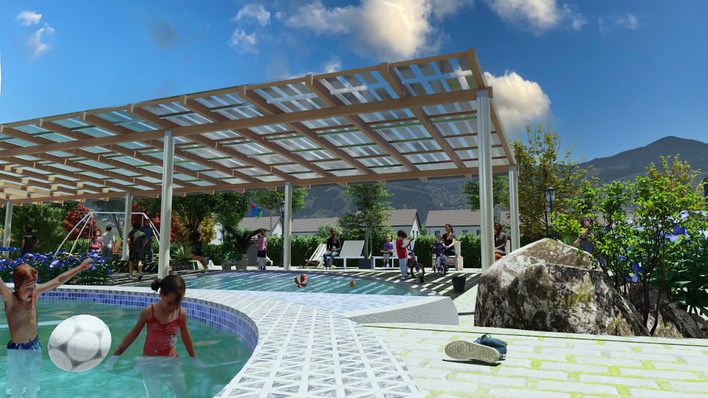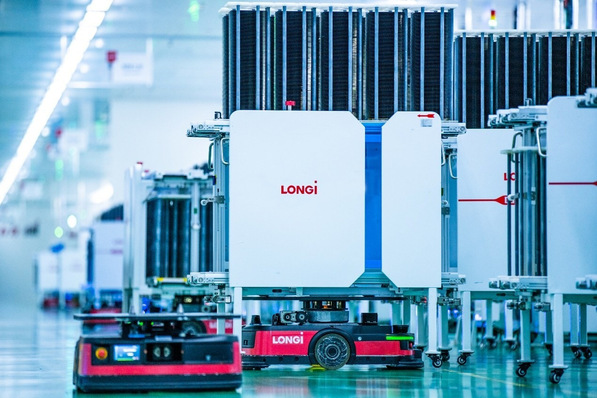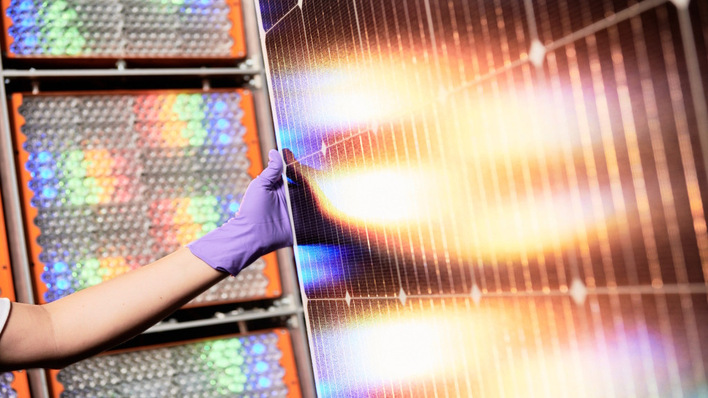In 2024, the global solar photovoltaic market reached a record 703 gigawatts (GW) in shipments and 566 GW installed. Due to overcapacity in the module market and technological advancements, the weighted average solar module spot price fell by 33% year-on-year (YoY) to $0.08/W by the end of 2024.
March 2025 PV Index: Stability persists as stock levels tighten
The ITRPV report tracks the price experience curve, namely the average PV module sales price as a function of cumulative shipments, and this indicates a 25.6 percent learning rate from 1976 to 2024. This learning rate reflects the impact of technological advancements as well as severe market conditions on prices.
Silicon-based photovoltaics technology advancements
Crystalline silicon photovoltaics dominated around 98% of the market share in 2024, with thin-film technology making up the remaining portion. Within the silicon-based PV market, monocrystalline Czochralski silicon (Cz-Si) wafers lead, with n-type wafers now accounting for about 70%, surpassing p-type materials. This shift is driven by the growth of n-type TOPCon technology, which for the first time overtakes p-type PERC, according to GW-scale manufacturers that contributed to the report.
Longi upgrades Lighthouse factory for HPBC 2.0
Silicon heterojunction (SHJ), back contact (BC) cells, TOPCon-based back contact (TBC) and heterojunction-based back contact (HBC) are expected to gain market share. Mass-produced tandem-silicon cells are anticipated to have a double-digit market share in 10 years based on the survey results. Large wafer formats M10 and G12 with their rectangular variations dominate. G12 (i.e, with wafer side length 210 mm) and G12(R) formats are expected to account for approximately 75 percent of the market by 2035.
Formats larger than G12 are projected to reach nearly 10 percent, while the rectangular M10 format is anticipated to maintain a market share of around 15 percent. Accordingly, newly built cell production lines will be designed to accommodate these formats, and are expected to be prepared for the integration of larger than G12 formats.
90 percent market share for bifacial solar cells anticipated
Bifacial solar cells are expected to capture around 90% of the market share, with projections indicating this will rise to 95% over the next decade. Significant advancements are being made in reducing material consumption across various technology routes, including lowering polysilicon usage through wafer thickness reduction, cutting silver consumption through fine line printing, and incorporating copper in metallisation. Equipment throughput values are also expected to continue rising in the coming decade.
Expert analysis: How perovskite can overcome durability concerns
N-type TOPCon cells, homogeneous emitters with Laser Enhanced Contact Optimization (LECO) dominate the market with around 60 percent share in 2024, projected to rise to nearly 87 percent by 2035. Selective emitters use declines with non-LECO variants phasing out by 2027. Edge passivation of separated solar cells by deposition processes also gain importance for half cells or smaller, dominating the market in a decade.
Larger modules dominate the market
At the module level, copper interconnection is projected to continue dominating the market for cell-to-cell and string interconnection. For rooftop installations, modules larger than 2.0 m² are expected to gain a higher market share starting in 2025, while those between 1.8 and 2.0 m² will maintain the largest share. Smaller modules under 1.8 m² will see their market share decline to below 6 percent over the next three years.
TÜV Rheinland: Increasing requirements for solar modules
The module size trends for large-scale ground-mounted installations, like power plants, show a stronger shift toward larger modules compared to rooftop residential applications. Modules smaller than 2.5 m² are expected to remain niche, while those between 2.5 and 3.0 m² will dominate the power plant market. Larger power plant modules exceeding 3 m² are projected to capture about 25 percent of the market share in the next 10 years.
Smaller module fabs for specialized applications and regional markets
The trend in module production fabs mirrors that of cell production, with factories exceeding 5 GW in annual capacity expected to dominate the future production landscape. However, smaller module fabs with capacities under 5 GW, and even under 1 GW, are expected to remain operational for specialised applications and regional markets for the next decade. Smart fabrication topics are seeing batch tracking dominate, with an increase in single piece tracking in manufacturing.
Industry 4.0 is shaping cell production through four automation levels, from fully connected fabs (Level 1) to autonomous decision-making fabs (Level 4), with higher levels incorporating all lower ones. In 2024, Level 1 dominated with a 78 percent share, but Levels 2 and 3 are expected to take the lead by 2035. Level 4 will begin entering the market from 2029, with gradual adoption.
Join our Live Events at The smarter E Europe 2025 in Munich
The 16th edition of the ITRPV questionnaire is surveyed on a digital interactive platform that automates the analysis process of data contributions. The International Technology Roadmap for Photovoltaics (ITRPV) is updated regularly by the VDMA Photovoltaics. (hcn)








